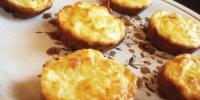Airplanes at the parade on May 9. Without planes and ships: why the military parade was shortened in both capitals
Despite the fact that 98 million rubles were allocated to clear clouds in Moscow by May 9, the military aviation parade on Victory Day was cancelled. And in St. Petersburg, the naval part of the parade was canceled without explanation
Dress rehearsal for the Victory Parade in Moscow (Photo: Valery Sharifulin / TASS)
Moscow without aviation
This year the Victory Parade on Red Square took place without aviation. The reason, according to the Ministry of Defense, was unsuitable weather in the capital and region. Later this is the press secretary Russian President Dmitry Peskov. He emphasized that an order from neither the Supreme Commander-in-Chief nor the Minister of Defense was needed to cancel the air part of the parade. “There are safety conditions due to weather conditions when military aviation cannot carry out its tasks,” Peskov said, noting that the cloud cover was almost 150 meters, and aviation should not fly below 500 meters of cloud cover.
This is enough for planes to land - the airports were operating as normal, Roman Vilfand, director of the Russian Hydrometeorological Center, told RBC. But such weather is not suitable for demonstration flights, he said. “The plane would simply go into the clouds, nothing would be visible. If the clouds were of the middle tier - at an altitude of 3 km, then it would be possible to make the figures that were expected,” explained the director of the Hydrometeorological Center of Russia.
March 23, 2017 on the website public procurement a tender worth 293.6 million rubles was placed. for “carrying out work on weather protection of Moscow” on May 1, May 9 and June 12. About 98 million rubles. was allocated to ensure cloudless skies over Moscow on Victory Day. The customer of the work is “Expertavtodor”, the contractor is the “Agency of Atmospheric Technologies”. RBC was unable to contact her on May 9; the company did not answer phone calls.
Impact on clouds and their dehydration by spraying reagents leads to a decrease in precipitation intensity, Vilfand noted. “Such operations were carried out, the intensity of precipitation was reduced. But no one set out to create clear sky. This is impossible. Especially given the synoptic process that existed,” he stated. The day before, May 8, it was raining and sleet in the capital.
Technically, aviation could fly over Red Square, says pilot civil aviation Aeroflot, former military pilot Vitaly Sokolovsky. At the moment, the Russian Aerospace Forces have the necessary training and full equipment technical means for flights in any weather conditions, he noted.

Victory Parade rehearsal (Photo: Denis Tyrin/AP)
“There are special devices and systems that allow this to be done. But still there was 99% confidence,” Sokolovsky said. “With such visibility, we must not forget about the 1%, which accounts for disasters and emergency situations.”
Considering that the flights were supposed to take place over a densely populated area, the authorities did not take risks and wisely canceled air part parade, says the head of the flight test complex LII named after. Gromov, Honored Pilot of Russia Boris Barsukov. In order to fly over Red Square, pilots would have to “break through” the clouds while descending, he pointed out. “Anything could have happened in such conditions, including aircraft collisions, so they would have marched in a fairly dense battle formation,” Barsukov said. According to the pilot, on May 9 there were powerful cyclone fronts and the fact that during the parade itself it was possible to ensure the absence of precipitation was already an achievement.
That the aviation part of the Victory Parade in Moscow will be represented by 17 helicopters and 55 aircraft, including the strategic missile carriers Tu-160, Tu-95MS, as well as the supersonic fighter-interceptor Mig-31. It was planned to demonstrate Ka-52 attack helicopters, which, according to the head of the Main Operations Directorate of the General Staff, Sergei Rudsky, played a decisive role in the second liberation of Palmyra. A performance by the Russian Knights aerobatic team was also planned. In conclusion, six Su-25 BM attack aircraft were supposed to paint the sky over Red Square in the colors of the Russian tricolor.
At the same time, the cost of aviation kerosene, which would have been spent during the parade, amounted to about 14 million rubles.
Petersburg without ships
In St. Petersburg, the Victory Parade also did not go according to plan - the participation of warships was canceled, Interfax reported. Previously, it was assumed that more than ten ships from the Baltic and Leningrad naval bases of the fleet would take part in the celebrations in the Neva waters. The Ministry of Defense has not yet commented on the cancellation of the naval part of the parade in St. Petersburg. RBC is awaiting an official response to its request.
St. Petersburg edition “Fontanka” that the ships of the Baltic Fleet entered the Neva waters on May 3, but left it three days later. The reason was allegedly the American destroyer USS Carney, which may have Tomahawk cruise missiles on board, which entered the Gulf of Gdansk, the publication claimed. An unnamed Baltic Fleet officer told Fontanka that dispersing ships at sea is a common navy tactic in the event of a threat of a surprise missile strike.
An RBC source in the Ministry of Defense called this explanation “nonsense.” However, when asked why the ships did not appear in St. Petersburg on May 9, the interlocutor found it difficult to answer. “The decision was made to return them, and that’s it. Why, I don’t know, but this has nothing to do with the American destroyer. We would not transfer all our forces for one ship,” he said.
According to Fontanka, the government of St. Petersburg spent about 4 million rubles on preparing the naval part of the parade. The money was used to install mooring barrels for ships in the Neva and to pay for the after-hours work of port services to move ships at night in the Neva on May 3.
If the decision to cancel the naval parade in St. Petersburg on May 9 was made due to the approaching inland waters Russia's American destroyer, then, most likely, “this was the decision of a non-military person,” says military expert Vladimir Shcherbakov. He also noted that weather conditions could hardly have played a decisive role, since they could only affect the “visual perception of the spectacle.”
The editor-in-chief of the Arsenal of the Fatherland magazine, reserve colonel Viktor Murakhovsky, also does not believe that the naval part of the parade in St. Petersburg was canceled because of the American destroyer. In his opinion, this may be related to the actions of the Russian armed forces in Syria.
We are talking about the concentration of a naval group in the Eastern Mediterranean, Murakhovsky admitted. “This is necessary, first of all, in order to deter provocations aimed at disrupting the process that Russia, Iran and Turkey are ensuring in Syria,” the military expert concluded.
The parade in honor of the 72nd anniversary of Victory in the Great Patriotic War was held in 28 Russian cities this year, the Ministry of Defense reported. More than 90 thousand military personnel took part in it. The largest parade was in Moscow - more than 10 thousand military personnel and 114 units of ground military equipment took part in it. In St. Petersburg, more than four thousand people, 96 units of military equipment and more than 40 aircraft were involved in the celebration.
Due to unfavorable weather conditions in the Moscow region, the Ministry of Defense decided to cancel the flight of military aircraft over Red Square during the Victory Parade. It was planned that 72 planes and helicopters would fly over the square.
Aircraft of the Russian Aerospace Forces over Red Square at the dress rehearsal of the Victory Parade on May 7 (Photo: Ekaterina Shlyushenkova / RBC)
The Ministry of Defense has canceled the aerial part of the parade in honor of the 72nd anniversary of the victory in the Great Patriotic War, TASS reports citing the department's press service.
The decision was made due to unfavorable weather conditions in Moscow and the region.
“The planes and helicopters involved in the Victory Parade on Red Square will return to their home airfields,” the agency quotes a message from the defense department.
In 2017, about 10 thousand military personnel and 114 units of ground equipment took part in the parade.
It was assumed that 72 aircraft and helicopters would take part in the air parade. The air column was to be led by the world's largest military transport helicopter, the Mi-26, accompanied by four Mi-8s. The parade was to include strategic and long-range bombers Tu-160, Tu-95MS and Tu-22M3, as well as fighters, including the latest Su-35S, front-line bombers and attack aircraft, Yak-130 combat training aircraft, military transport vehicles and aircraft -refuelers. It was also planned that Mi-26 and Mi-8AMTSh, Mi-28N, Ka-52 and Mi-35M helicopters would fly over Red Square. Aviation was concentrated at eight airfields in eight regions of Russia.
At the military parade in St. Petersburg, the aviation flyover went according to plan. “The most experienced crews of Su-35, MiG-29, Su-27, Su-34 fighters, Ka-52, Mi-8, Mi-24, Mi-26 helicopters, An-12 transport aircraft, took part in the aerial part of the parade. An-26, Tu-134, more than 40 pieces of aircraft in total,” the press service of the Western Military District told TASS.
However, the St. Petersburg parade took place without the participation of ships, Interfax reports. It was previously reported that on Victory Day, ships from the Baltic and Leningrad naval bases of the fleet will take part in ceremonial events in the Neva waters. In total, it was planned to use more than ten ships, boats and support vessels Baltic Fleet. However, despite their announced participation in the celebrations, the ships never appeared in St. Petersburg.
In 2016, 71 units of military equipment flew over Moscow in an aerial formation. This year, among other things, they were supposed to fly over the capital attack helicopters Ka-52 and the Russian Knights aerobatic team.
As RBC previously reported, according to the government procurement website and according to RBC calculations, more than 509 million rubles were spent on the celebration in Moscow.
Due to abnormal weather conditions, aviation did not take part in the aerial part of the Victory Parade. The aircraft flyover was canceled for the second time in the history of the parades. The first was on June 24, 1945, when the planes could not take off due to heavy rain.
MK asked military expert Viktor Murakhovsky for what reasons the air parade was canceled and who exactly could make such a decision.
The aerial part of the parade can be canceled only in case of the most unfavorable weather conditions. Unfortunately, on May 9 in Moscow the weather looked more like late autumn. Heavy low clouds, rain and snow, gusty winds. Despite the fact that since the evening of May 8, aviation tried to disperse the clouds over Moscow, these attempts were unsuccessful.
According to Murakhovsky, the meteorological conditions were extremely unfavorable, and for flights over Moscow there are quite serious restrictions on the limit of lower cloud cover and visibility range.
“It is clear that ensuring flight safety now comes first. Of course, our aviation is all-weather and can decide combat missions in the most abnormal conditions,” says Murakhovsky. “However, we must understand that for flights over the city, especially in a ceremonial air formation, good weather conditions are needed.
According to Murakhovsky, the flight director can cancel the flight. During the parade, a control center is installed in one of the Kremlin towers from which the commander monitors the actions of aviation. Planes and helicopters leave for the starting points of their routes from different airfields. The flight director controls them online. He relies not only on data that comes to him from the GLONASS system, from military meteorologists, but also monitors information coming from pilots.
In order to make a decision to cancel flights, there are several factors,” says the expert. — A mandatory requirement is visual visibility of aircraft from the ground. In addition, the pilots themselves must see their colleagues in the air, in low cloud conditions. Wind speed and gusts are also taken into account. Probably these data did not satisfy the conditions. Even if the planes flew over Red Square, everyone would only hear the hum of cars.
According to him, the permissible limits for the flight of operational-tactical, long-range and military transport aircraft over Red Square are 300 meters. They have no right to go lower. Therefore, even if aviation flew over, the audience would only hear the hum of planes and helicopters.
According to eyewitnesses, the attempt to fly was still carried out. The planes took off from their home airfields and reached the assembly point in the Tushino area. However, having received the command, they turned around and returned to their airfields.
Follow us
MOSCOW, May 9. /TASS/. The military parade dedicated to the 72nd anniversary of Victory in the Great Patriotic War ended on Red Square in Moscow. Bad weather conditions, which forecasters had previously warned about, led to the cancellation of the aviation part of the parade.
This year, about 10 thousand people and 114 units of ground equipment took part in the ceremonial events on Red Square. A pleasant addition to this year’s parade was the participation of Arctic military equipment and units of the Yunarmiya movement.
President's speech
Speaking at the Victory Parade, Russian President Vladimir Putin expressed confidence that there is no force capable of enslaving Russia. “No, there has not been and will not be a force that could conquer our people,” said the head of state.
According to Putin, the Second world war could not be prevented due to the disunity of peoples, and the triumphant victory over this “terrible totalitarian force will forever remain in the history of mankind as the pinnacle of the triumph of life and reason over death and barbarism.”
The President also stated that the Russian Armed Forces are capable of repelling any aggression, but to effectively combat terrorism and other modern threats, the consolidation of the entire world community is needed.
Walking crews
Traditionally, the Victory Parade was attended by students of the Moscow and Tver Suvorov Military Schools, the Nakhimov Naval School, as well as the combined regiments of the Ground and Aerospace Forces, Navy and parade crews of the Ministry of Emergency Situations, FSB, Airborne Forces, RKhBZ, Strategic Missile Forces and the Russian Guard.
For the first time, detachments of Youth Army members, female cadets of the Budyonny Military Academy of Communications and the Mozhaisky Military Space Academy, and military personnel marched along Red Square as part of the parade formations. Marine Corps coastal troops of the Northern Fleet from the 61st separate Kirkenes Red Banner Brigade. Traditionally, the walking part of the parade was completed by Kremlin cadets.
Military equipment
The mechanized column was led by the legendary tank of the Great Patriotic War T-34, followed by the Tiger multi-purpose armored vehicles, the Typhoon-K and Typhoon-U universal armored vehicles, fighting machine infantry on the Kurganets-25 platform and the main infantry fighting vehicle BMP-3.
After them, a column of modern tanks appeared on Red Square - T-14 "Armata" and main battle tanks Russian army T-72B3. The artillery was represented by the Coalition-SV interspecific complex and Msta-S self-propelled howitzers, after which a division of Iskander-M high-precision missile systems and Buk-M2 and Tor-M2U anti-aircraft missile systems passed through the area.
In addition, the mechanized column included amphibious multi-purpose armored personnel carriers "Rakushka" and BMD-4M, anti-aircraft missile systems S-400 and autonomous launchers the latest Yars missile system, as well as an infantry fighting vehicle on the Boomerang platform.
Arctic equipment, which this year took part in the Victory Parade for the first time, was presented by anti-aircraft missile system"Tor-M2DT" and anti-aircraft missile-gun systems "Pantsir-SA" based on a two-link all-terrain vehicle.
There was no aviation
The parade was supposed to be completed by a flight of planes and helicopters of the Russian Aerospace Forces over Red Square, however, as reported by the Ministry of Defense, due to unfavorable weather conditions in the Moscow region, a decision was made to cancel the participation of aviation.
A Mi-26 helicopter accompanied by four Mi-8s, Mi-28N, Ka-52 and Mi-35M helicopters, Tu-160, Tu-22M3 and Tu-95MS strategic bombers, Il-refueling aircraft were to take part in the Victory Parade. 78, An-124 and Il-76MD military transport aircraft, Su-35S, Su-Z0SM, Su-27, MiG-29, MiG-31BM fighters, Su-34, Su-24M front-line bombers, Yak combat trainer aircraft -130 from the air group "Wings of Taurida". The parade was to be completed by six Su-25 attack aircraft with smoke in the colors of the Russian flag.




